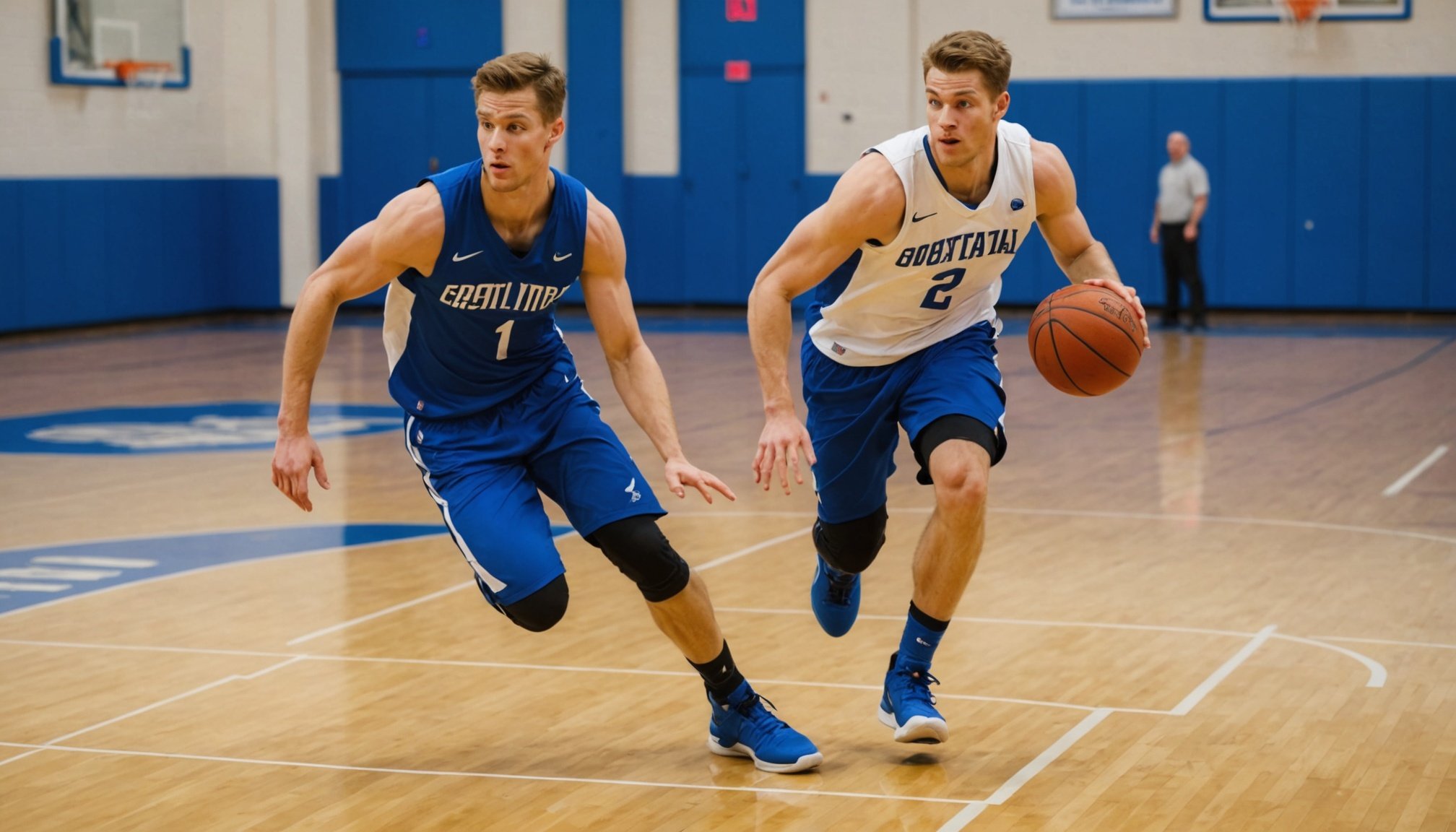Importance of Agility for Basketball Forwards
Agility in basketball is critical for forwards, as it greatly influences their effectiveness on the court. Forwards are in continuous demand of shifting positions swiftly — defending the basket one moment and attacking the next. In doing so, they must blend peak athleticism with rapid decision-making.
In the UK basketball context, forward performance is measured by several metrics, such as shooting percentage and defensive efficiency. However, agility ties it all together, affecting these performance metrics directly. A forward with enhanced agility can maintain tighter defensive positioning and exercise improved control over dribbling and shooting.
Also read : Top Ankle Stability Workouts for UK Basketball Players: Boost Your Game Performance!
Agility impacts game strategy and player effectiveness considerably. Forwards employ agility to weave through defenders, execute perfectly timed passes, and evade block attempts. Teams leverage these abilities to initiate fast breaks and maintain an aggressive playstyle.
Therefore, honing agility should be prioritized in training regimens. Understanding this, coaches can craft strategies maximizing a forward’s natural athleticism, positioning them advantageously during both offensive plays and defensive stances. Recognizing agility’s importance aids in cultivating a more versatile and impactful athlete, vital for competitive basketball scenarios.
Have you seen this : Mastering Mental Grit: Top Strategies for UK Basketball Players to Overcome Fatigue
Key Agility Drills for Forwards
Effectively training forwards in basketball drills is crucial for enhancing their agility. Focusing on targeted exercises like lateral cone drills, shuttle runs, and ladder drills can significantly improve a forward’s performance on the court.
Lateral Cone Drills
This drill focuses on fine-tuning lateral movement and footwork. Place cones in a straight line, and have players shuffle side-to-side, keeping their bodies low. This exercise enhances sideways agility, sparking quicker defensive reactions. Adjusting cone spacing and adding direction changes can increase the drill’s complexity.
Shuttle Runs
Shuttle runs are a staple for boosting both cardiovascular endurance and agility. Players sprint back and forth between set markers at varied distances. This not only simulates game conditions but also improves stop-and-go speed. For maximum benefit, these runs should be incorporated at least twice weekly, with varying distances and speeds.
Ladder Drills
Ladder drills are ideal for refining balance and coordination. Techniques like high knees or side steps within the rungs hone precise movements essential for game day. Including ladder drills in warm-ups familiarises players with controlled footwork patterns. Aim to vary the exercises frequently to maintain engagement and challenge development.
Video Demonstrations of Agility Drills
Agility drill videos serve as an invaluable tool for enhancing coaching resources. Visual learning significantly aids players in achieving technique accuracy, which is vital in executing drills effectively. By watching these demonstrations, players can grasp the nuances of each movement more clearly.
Various online platforms provide excellent video content showcasing agility techniques. Websites with curated training aides offer comprehensive demonstrations that can be accessed on-the-go, perfect for supplementing in-person coaching. Coaches are encouraged to direct players to trusted platforms emphasizing quality and precise execution.
Utilizing video analysis also plays a crucial role in advancing player performance. Coaches can record and review practice sessions, identifying areas for improvement and celebrating progress. Encouraging players to engage with these video resources allows them to self-reflect and independently correct their movements.
In summary, integrating coaching resources with agility drill videos enhances both individual and team training. This approach not only aids in developing forward skills but also builds a more engaged and self-aware athlete, driven by visual and practical comprehension.
Incorporating Agility Drills into Practices
Incorporating agility drills efficiently into practice sessions is crucial for maximizing training schedules. To ensure these are effective, it’s important to align them with existing practice plans, considering the rhythm of team drills. Agility drills can often be integrated at the start of practice when players are fresh and receptive to coordination and footwork tasks.
Balancing agility work with other skills, like shooting and tactical practice, remains essential. Training schedules can designate specific days focused on agility, interspersed with core skills. For example, alternating between agility-focused days and skills-training days allows players to develop comprehensively without compromising overall forward performance.
Coaches might consider creating a sample practice plan that begins with a 10-minute agility warm-up, transitions into skill-specific drills, and finishes with team plays. This structured approach aids players in understanding how agility directly ties into broader game strategy and tactics, enhancing their adaptability and effectiveness on the court. Planning these sessions effectively contributes to sustained player development and performance enhancement.
Measuring Agility and Performance Improvements
Using performance metrics to gauge agility improvements is essential for basketball forwards. Metrics such as acceleration, change of direction, and reaction time can quantify a forward’s growth. These evaluations reveal how players leverage agility to enhance forward performance on the court.
Implementing agility assessments like timed sprints or agility ladder tests helps in tracking advancements over time. These tangible measurements allow players and coaches to pinpoint strengths and address weaknesses. Incorporating regular assessments into training regimens ensures consistent monitoring of progress.
Notably, tracking progress supports long-term player development by motivating athletes to surpass previous benchmarks. Coaches can record baseline performances and measure improvements against set targets. Documenting this data offers valuable insights, fostering a data-driven coaching approach.
Forwards benefit from tailored agility programs focused on enhancing specific metrics. This personalized focus aligns training efforts with athletic goals, supporting peak athleticism and boosting on-court effectiveness. Regular analysis of performance data aids forwards in optimizing game strategy and refining technical skills, crucial for competitive success.

